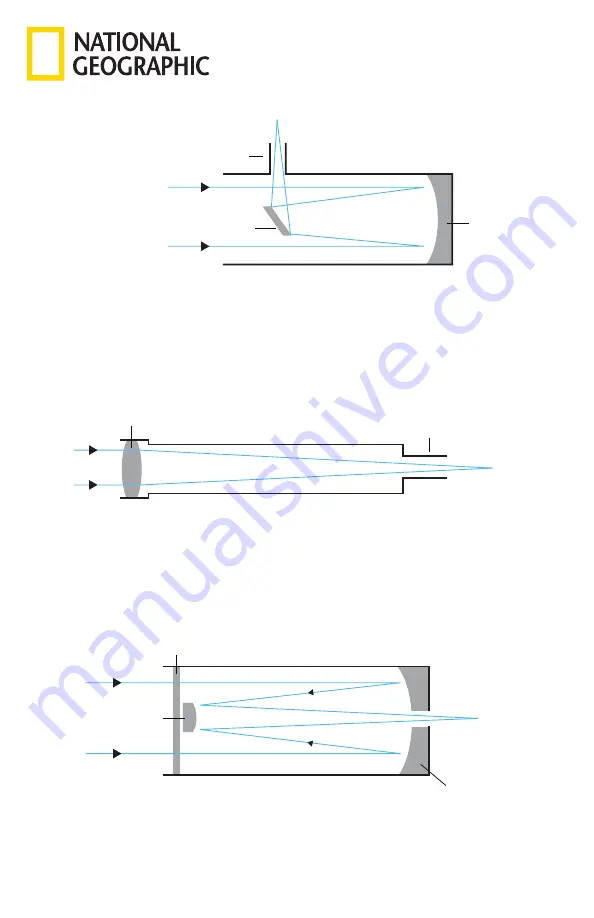
12
12
Light
Light
Secondary Mirror
Primary Mirror
(Objective)
Focuser
Focuser
Light
Light
Objective Lens
Light
Light
Secondary Mirror
Primary Mirror (Objective)
Correcting Lens
Reflector
(Newtonian)
Refractor
Catadioptric
(Maksutov-Cassegrain/
Schmidt-Cassegrain)
Light
Light
Secondary Mirror
Primary Mirror
(Objective)
Focuser
Focuser
Light
Light
Objective Lens
Light
Light
Secondary Mirror
Primary Mirror (Objective)
Correcting Lens
Reflector
(Newtonian)
Refractor
Catadioptric
(Maksutov-Cassegrain/
Schmidt-Cassegrain)
Light
Light
Secondary Mirror
Primary Mirror
(Objective)
Focuser
Focuser
Light
Light
Objective Lens
Light
Light
Secondary Mirror
Primary Mirror (Objective)
Correcting Lens
Reflector
(Newtonian)
Refractor
Catadioptric
(Maksutov-Cassegrain/
Schmidt-Cassegrain)
Reflector
A reflector telescope uses mirrors to gather and focus light. Light enters the telescope through its
open front end and travels to the concave primary mirror at the back. From there the light is reflected
back up the tube to a flat secondary mirror, which sits at a 45° angle in relation to the eyepiece. Light
bounces off of this secondary mirror and out through the eyepiece. A reflector telescope is designed
for astronomical use. Terrestrial objects may appear inverted, sideways or at an angle depending on
how your tube is oriented due to optical design. This rotation is perfectly normal on all Newtonian
reflectors and will not affect astronomical viewing.
Refractor:
A refracting telescope uses a collection of lenses to gather and focus light. A refractor’s views will
be upside down if a diagonal is not in use. A standard diagonal will generate a “right side up” image,
however, it will rotate the image on the vertical axis (mirror image). To get the “right side up” image
without the rotation, you will need to use a special diagonal with an erect image prism.
Catadioptric:
A catadioptric telescope uses a combination of mirrors and lenses to gather and focus light. Popular
catadioptric designs include the Maksutov-Cassegrain and Schmidt-Cassegrain.
Types Of Telescopes:





























